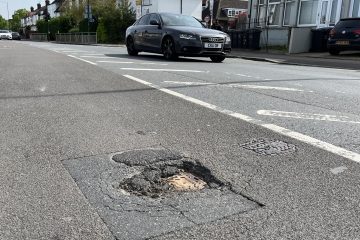
The headlights of some newer cars are so bright they are causing a road safety hazard for drivers with as many as two-thirds (65%) of motorists saying they regularly get dazzled by oncoming headlights even though they are dipped.
15% of motorists surveyed by the RAC claim they have suffered a near-miss as a result of being dazzled by modern headlights that they believe are too bright. While it is well known that older drivers often have difficulty when driving at night due to glare from headlights, the RAC findings about the dazzling effect of some new car headlights were similar among drivers of all ages.
A range of different types of headlights are fitted to UK vehicles from the traditional halogen headlamps to the brighter, newer xenon, or high intensity discharge, lights which are longer-lasting due to not having a filament, and LED headlamps which are said to produce a light much more similar to daylight that is not as dazzling to drivers in oncoming traffic due to less glare. But while the new designs of headlights are brighter, making it easier for drivers to see and therefore potentially safer for them, this may be at the expense of the safety of other road users.
The RAC Opinion Panel survey of 2,061 motorists found that six in 10 (58%) motorists think modern vehicle headlights are so bright they risk causing other motorists to have accidents.
Of those who claimed to regularly get dazzled by oncoming dipped headlights, the majority felt it takes up to five seconds before they can see clearly again. One in 10 (10%), however, say it takes from as long as 10 seconds before their vision is back to normal. Only 16% said it takes less than a second to recover.
Only one in 10 drivers (12%) think the brightness of headlights on most newer cars is about right. Two-thirds (66%) believe some are too bright and a fifth (22%) claim most are too bright.
Among those who think modern car headlights are too bright, half (49%) claim they even get dazzled by headlights in their rear view mirror. This has led to 62% constantly having to click their mirrors up and down to avoid being dazzled, 21% relying on their wing mirrors more and 16% not using their rear view mirrors as much as they would otherwise have done.
Due to brightness of some modern-day headlights a worrying two-thirds of motorists (66%) say they now struggle to tell if oncoming lights are on full or dipped beam. In a situation after dark at a T-junction when waiting to pull out, 68% admitted to finding it difficult to tell whether or not some approaching vehicles had their indicators on due to the brightness of the headlights.
RAC road safety spokesman Pete Williams said: “The intensity and brightness of some new car headlights is clearly causing difficulty for other road users. Headlight technology has advanced considerably in recent years, but while that may be better for the drivers of those particular vehicles, it is presenting an unwanted, new road safety risk for anyone driving towards them or even trying to pull out at a junction. Drivers also find it very distracting when they have to contend with being dazzled by bright lights in their rear view mirrors.
“While regulations specify that all types of dipped headlights must fall between a maximum and minimum luminosity the night-time driving experience of motorists of all ages is very different with many saying dipped beams of some modern vehicles are too bright.”




You must be logged in to post a comment.